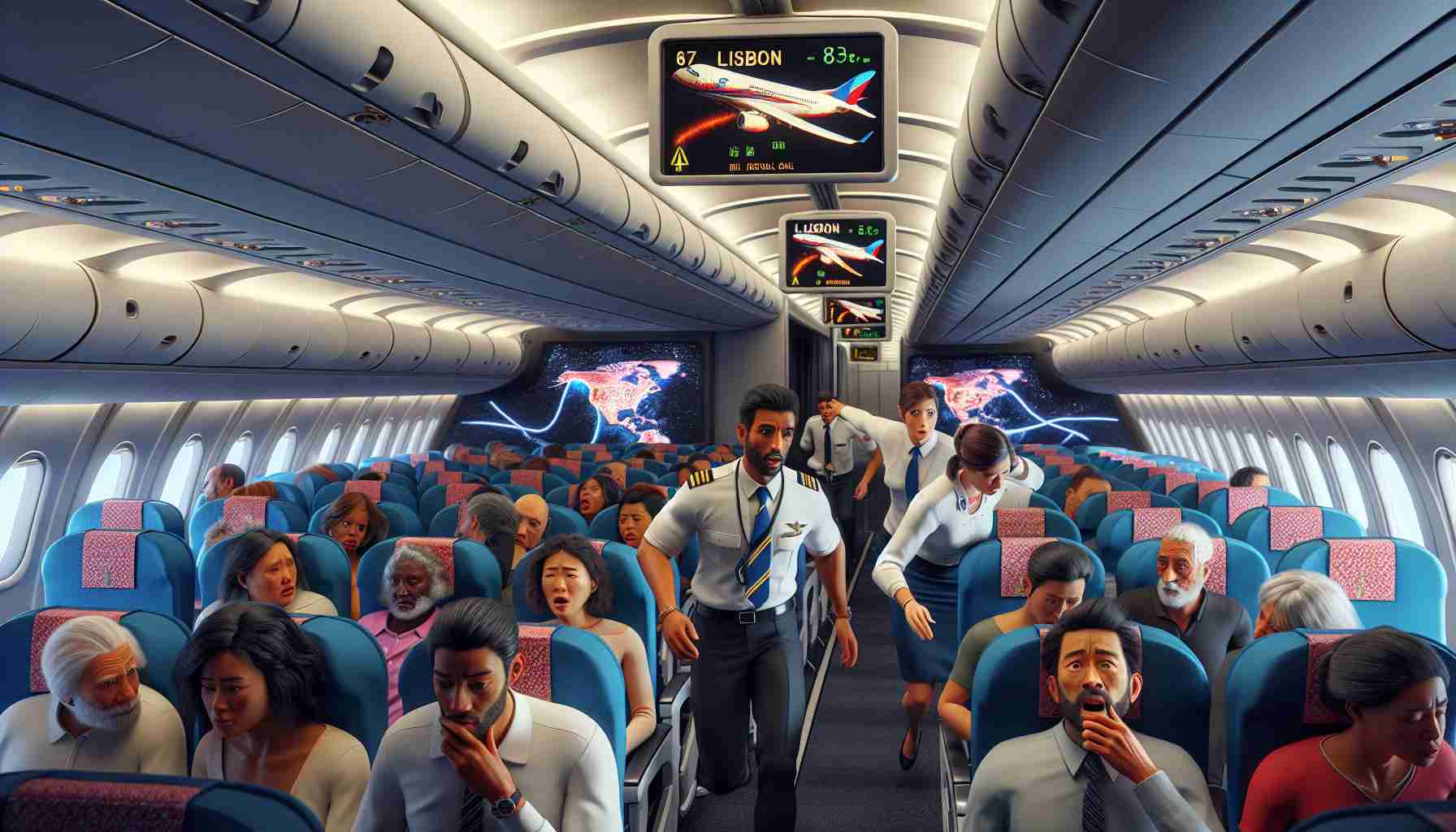
A dramatic situation unfolded mid-flight on an air journey from Luton to Lisbon, leading to a crew member requiring immediate medical attention upon landing. The unidentified co-pilot, said to have fainted during the flight, was swiftly assisted by paramedics on the runway before being transported to Santa Maria Hospital in Lisbon.
The airline, in a statement, confirmed the incident, emphasizing that the safety of the flight and its passengers was never in jeopardy. The flight, which had 193 passengers on board, followed standard operating procedures and conducted a safe landing despite the unforeseen circumstances.
In a similar incident from recent history, a Ryanair flight had to divert in December last year due to a pilot falling ill mid-flight. Passengers traveling from London Stansted to Morocco experienced a tense moment when the pilot declared a medical emergency, triggering a rapid response at Faro Airport.
These incidents serve as stark reminders of the unpredictable nature of air travel and highlight the importance of prompt emergency response protocols to ensure the well-being of all individuals onboard. The quick actions taken by the airline staff and emergency responders undoubtedly played a crucial role in managing the situations effectively.
A medical emergency during a flight is not only a challenging situation for the crew and passengers but also raises essential questions about in-flight medical care and emergency response protocols. What are the key considerations and challenges associated with such incidents?
One crucial question is whether airlines have sufficient medical training and resources onboard to handle emergencies effectively. While all commercial flights are required to have basic medical kits, including emergency medications and supplies, the level of medical expertise among the crew may vary. In cases where a serious medical event occurs, such as a pilot or co-pilot falling ill, the ability to provide advanced medical care becomes a significant concern.
Another important aspect to consider is the decision-making process when faced with a medical emergency that may require diverting the flight to a different destination. Airlines must weigh the risks of continuing the journey versus the need for immediate medical attention on the ground. The impact on passengers, scheduling, and logistics can be complex, highlighting the importance of clear protocols and communication between the crew, ground staff, and medical professionals.
Advantages of effective in-flight medical care and emergency response include saving lives, reassuring passengers, and maintaining the airline’s reputation for safety and reliability. When a medical emergency is handled swiftly and competently, it can instill confidence in passengers and showcase the airline’s commitment to passenger well-being.
However, challenges and controversies may arise in situations where the crew lacks medical training or when communication with ground services is hindered. Delays in receiving medical assistance, uncertainty about the severity of the condition, and potential disruptions to travel plans can lead to dissatisfaction among passengers and scrutiny of the airline’s emergency preparedness.
For further insights into aviation safety and emergency response procedures, readers may find valuable information on the International Air Transport Association (IATA) website. This global trade association for airlines offers resources and guidelines aimed at ensuring safe and secure air travel for passengers and crew alike.






